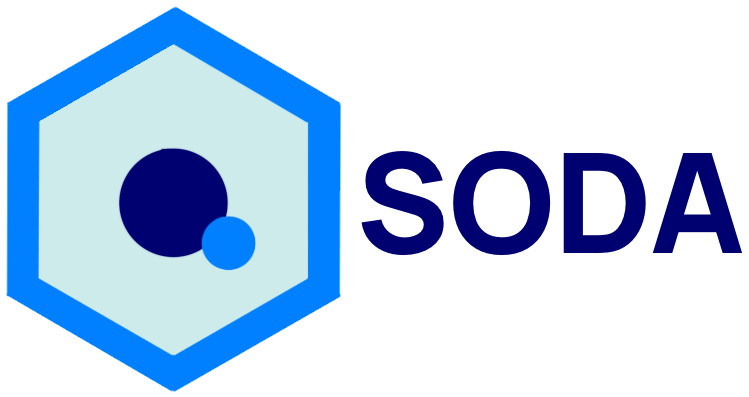AGILITY VS AGILE
Agility Is a Behavior. Agile Is a Process. Know the Difference.
Agile started as a revolution. Today, it's often a rigid ritual. Across industries, organizations say they "do Agile"—but few demonstrate real agility. The two are not synonymous. In fact, confusing them is one of the most common and costly mistakes in digital transformation.
Agility is not a framework. It is not a set of ceremonies. It is a behavioral capability—the ability to respond to change with speed, clarity, and purpose. It is the oxygen that keeps digital organizations alive.
Agile, by contrast, is a methodology. It offers structure and tools that support agility. But without the right behaviors behind it, Agile devolves into theater. Sprints are scheduled. Standups are held. Progress stalls.
Where Agile Came From—and How It Was Corrupted
In 2001, seventeen software practitioners signed the Agile Manifesto, rejecting technology-driven PMBOK and PRINCE-style rigid processes and emphasizing collaboration, working software, and adaptability. The movement modernized software delivery and set American tech giants on their winning course.
Since then, the Agile Manifesto spawned a constellation of frameworks: Scrum, XP, Kanban, Disciplined Agile, LeSS, SAFe, and more. They offer proven approaches and tools for team-level execution. However, the spirit of agility—rapid learning, cross-functional collaboration, continuous improvement—has mostly gotten lost in enterprise digital transformations.
When Agile becomes a checkbox exercise, it creates a false sense of progress. Agile metrics become the goal in and of themselves, rather than a tool for self-reflection to improve the team’s value to the enterprise objectives. The result? Teams that deliver regularly, but not meaningfully. Software that ships, but doesn’t stick.
What Agility Looks Like in Practice
Agility is a behavior that shows up in:
How teams respond when conditions shift or needs evolve.
How individuals adapt when priorities change or uncertainty arises.
How leaders react when plans no longer fit reality.
Agile frameworks can support these behaviors—but they cannot replace them. True agility requires:
Comfort with ambiguity: being able to move forward without full certainty.
Rapid feedback cycles: learning early, often, and in the open.
Psychological safety: fostering a culture where experimentation and the resulting learning is safe–at all levels.
Disciplined execution: focusing on purpose, not just process.
Agility Without Agile? Agile Without Agility?
Both extremes exist—and both are problematic.
Agility without Agile can result in chaos. Teams may pivot constantly, but without structure, focus is lost.
Agile without agility results in bureaucracy. Teams follow the rituals, but miss the point.
High-performing digital organizations blend the two. They build structured systems that enhance adaptability. They apply Agile frameworks with discipline and purpose.
SODA’s Take: Agility as an Operating Behavior
The System of Disciplined Agility (SODA) treats agility as a behavioral principle—one of its three foundational pillars alongside systems thinking and discipline. In this model, agility is not a phase or a workshop. It is how teams work, how their decisions are made, and how the organization learns bottoms-up.
In SODA:
Agile frameworks are optional. Agility is not.
Change is embraced, but with purpose.
Feedback is constant, and learning is systemic.
Execution flexes, but the vision holds firm.
Why Agility is Harder Than Agile
Agility demands more than process change. It requires mindset shift. It forces teams to:
Let go of rigid and detailed long-term planning.
Work transparently, exposing flaws early.
Share ownership of outcomes.
Act before all the answers are known.
It also requires cultural alignment. Where legacy culture prioritizes control, agility demands trust. Where bureaucracy values approval, agility values action.
How to Build Agility into the Culture
Building agility means rewiring organizational habits:
From long-term plans to rolling objectives.
From command-and-control to distributed decision-making.
From certainty-seeking to experimentation.
It also means rewarding the behaviors that drive it:
Recognizing learning ‘now’ over perfection ‘then’.
Supporting those who challenge outdated assumptions.
Promoting leaders who enable and coach, not just control and direct.
Language Reveals the Culture
Pay attention to language. Agile cultures ask:
“What have we learned?”
“How might we test that?”
“What’s the smallest next step?”
Non-agile cultures ask:
“Who approved this?”
“Why didn’t we follow the plan?”
“How can we make the slide look better?”
Agility shows up in what is said—and what is done.
The Risk of Mislabeling
When agility is confused with Agile, transformation efforts stall. Leaders celebrate the adoption of Scrum, thinking the work is done. Teams burn out trying to deliver value in two-week increments, but never get the time or support to experiment, reflect, or improve.
Worse, when Agile fails, organizations conclude that agility is the problem. In reality, it was never tried.
From Process to Practice
The path to real agility requires more than a framework. It requires a system. SODA offers that system:
Discipline ensures direction.
Systems thinking aligns efforts.
Agility enables adaptation.
Together, they create the conditions where Agile frameworks can thrive—or be replaced, if needed—because the behaviors are what matter most.
Think Of It This Way
Agility is not a ceremony. It is a capability. It is the muscle that keeps digital organizations responsive, resilient, and relevant. Like a boxer in the ring: agility is the speed of their movements, Agile is the ring where the training, sparring, and prize-fighting happens.
Agile is a tool. Agility is a trait. In the race toward transformation, the latter wins every time.
Those who get it right don’t just do Agile. They practice and practice and improve agility—and that makes the difference in winning!
—
Credit where credit’s due:
A Guide to the Project Management Body of Knowledge (PMBOK® Guide) (7th ed.). (2021). Project Management Institute.
Managing Successful Projects with PRINCE2 (6th ed.). (2017). AXELOS.
